Sweden is being portrayed as a country with a different approach and strategy in relation to the corona crisis.
Commentators have explained this in different ways: as a political choice, a different relationship between politicians and experts and how the Swedish state is organised, a high level of public trust in government and state agencies, especially the relation between the government (in the narrow sense, i.e. the cabinet members) on the one hand and the state agencies on the other, to mention the main explanations.
I have during this crisis discussed an additional explanation, namely the fact that the Swedish constitution lacks a provision which allows for the proclamation of state of emergency in peacetime crisis (as opposed to war where such provisions exists).
This has become very obvious this week when the Swedish government suggested a transfer of power from parliament (Riksdagen) to the government to take effect on April 18th. This is possible pursuant to chapter 8 of the Swedish Instrument of Government (Regeringsformen), one of Sweden's four fundamental laws, and to some degree this possibility removes the need to have a provision on state of emergency.
In many other countries governments already have these powers in times of emergencies and they have also used these powers. As opposed to other countries where the government can on its own declare a state of emergency, the Swedish parliament has to give the government additional powers (i.e. the organ triggering the power is different) and in the Swedish Constitution it is not labelled as a “state of emergency”.
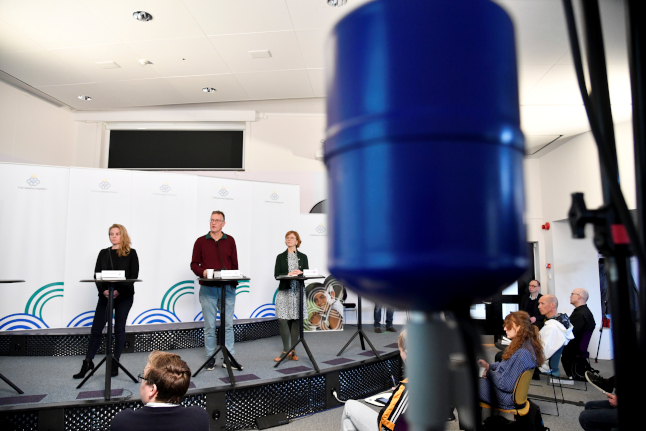
Sweden's Public Health Agency and other government agencies at the daily coronavirus briefing. Photo: Anders Wiklund/TT
At the outset we need to acknowledge that a country's constitution and laws are intertwined with issues such as culture, tradition and history. While many continental European countries have a history of war, revolutions and confrontational politics this is not the case of Sweden. The last time Sweden was involved in a war was 1814 and we did not have a revolution to introduce democracy or the current society.
Instead it was introduced by gradual economical, social and political reforms, including extending voting rights in stages leading to universal suffrage. In this sense Sweden is similar to England and present-day United Kingdom. Yes, England used martial law during the 1800s in its colonies, but not in England proper.
And thus, I also believe that with this common approach to societal change we may find an explanation why the United Kingdom alongside Sweden has been perceived to be slow-movers in response to the corona crisis. It is not in our mentality and tradition to declare state of emergency within our own countries. The UK has gradually changed and became more “continental” as a consequence of the Northern Ireland conflict and later as part of the fight against terrorism post 9/11, while Sweden has not changed to same degree.
Does this mean that Swedish law lacks all tools to handle emergencies?
No, instead of having a provision whereby the government can declare state of emergency and liberate itself from some restraints, the idea is that each separate statute law where relevant should contain clauses which may be used for emergency situations.
For example, the Public Order Act (Ordningslagen) gives the police, and if needed the government, the power to limit public assembly. This has been used during the corona crisis to limit public assembly to initially 500 persons and later 50 persons.
The Planning and Building Act (Plan- och bygglagen) allows derogations which are not normally available: such exceptions are allowed in times of environmental emergency (for example storm), massive inflow of asylum seekers (a change made after the events in 2015 when there was difficulties to provide housing) and in time of war. The government has suggested a change which would allow extraordinary measures also in relation to the spread communicable disease, to take effect on May 1st.
The Act on Communicable Disease Control (Smittskyddslagen) offers numerous extraordinary measures to place persons in quarantine, compulsory testing, closure of specific building and introduction of cordon in order to prevent the spread of dangerous illnesses.
In other countries some of these measures are taken by governments after declaring state of emergencies and using powers triggered by such declarations. In Sweden these powers are available in case of emergency without having a declaration of state of emergency.
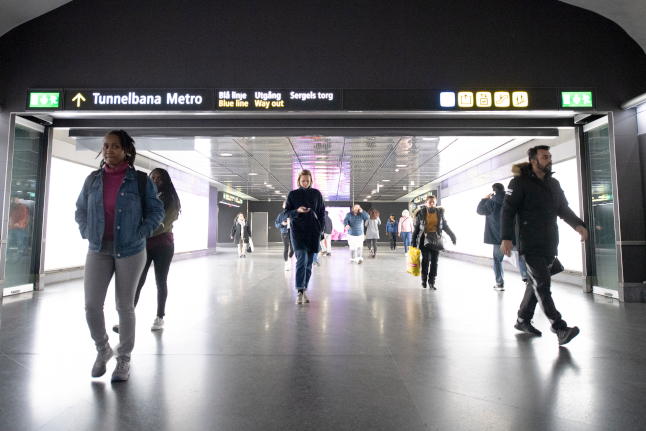
Fewer passengers are using the Stockholm metro during the coronavirus crisis. Photo: Ali Lorestani/TT
The idea and benefit of the Swedish approach is that the state and agencies are given limited powers in discrete areas without suspending parliament or giving the government sweeping powers which may open for abuse. In other words, Sweden has chosen a rule-of-law approach as opposed to an approach where the Sovereign (i.e. the government) is totally unrestrained in time of crisis.
The potential risk with the Swedish approach is that it requires the parliament to predict all future potential crisis and design each statute in advance of the crisis in a way that will give the state the necessary tools. If the statutes are not designed in an adequate way, parliament needs to change the laws during the crisis, the government cannot normally do that.
That is why the Swedish parliament during the corona crisis has changed or is about to change the Act on Education (to allow closure of schools and universities), the Planning and Building Act (to allow different use of buildings and remove obstacles to erect new buildings or demolish building) and now also the Act on Communicable Disease Control (to allow closure of restaurants, bars, night clubs, gyms etc).
Some may ask if it is wise to assemble the parliament with members living in different parts of Sweden when trying to contain a communicable disease such as Covid-19. The political parties of the parliament have solved this by agreeing on reducing the number of parliamentarians present to adopt news laws from 349 to 55.
This is possible by a set-off system (kvittning) which keeps the balance between the parties, government and opposition. This system is normally used to handle situation when one or few parliamentarians are ill. Thus, only 55 parliamentarians are voting, the rest are in a sense “reserves”.
The 55 parliamentarians present are primarily young – not belonging to the risk groups for Covid-19 – and live in Stockholm also during the weekends in order to prevent the spread of Covid-19 in the country (the epicentre of Covid-19 in Sweden is Stockholm while the rest of the country at this time is less subjected to the spread of the disease).
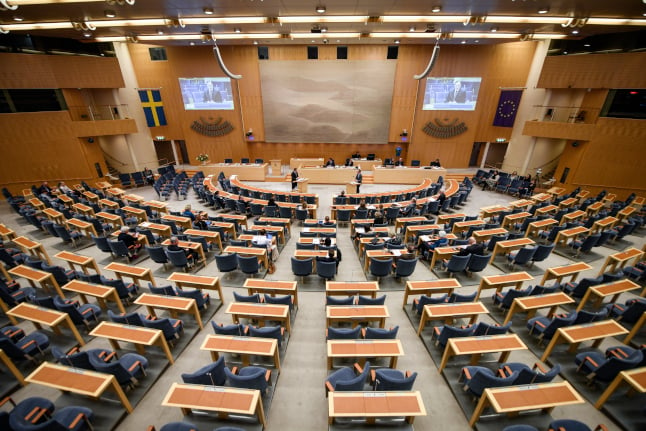
The Swedish parliament during the coronavirus crisis. Photo: Ali Lorestani/TT
I have personally had qualms during this crisis whether Sweden would be better off with a clause in our constitution allowing for declaration of state of emergency in peacetime crisis.
The government and parliament have decided to keep themselves within the bounds of the constitution but still adopt the laws and measures deemed necessary. It is difficult for me as not being an expert in communicable disease control to know whether the measures taken are enough.
Regardless if the Swedish policy is right or wrong, I would argue that this is not explained by the Swedish constitution and the lack of emergency powers in peacetime. It is rather explained by assessments made and the recommendations given by the Public Health Agency, advice which the Swedish government has decided to adopt as its own, i.e. the choice and strategy adopted in Sweden is a matter of policy, possibly also history, tradition and culture.
Mark Klamberg is professor in international law at Stockholm University. He has been an associate professor at Uppsala University (2013-2015), post doc at the University of Oxford, Institute for European and Comparative Law (2018-2019), and is a visiting lecturer at Edinburgh University (2014-2020).
What should you be doing to help reduce the rate of infection?
In Sweden, the official advice requires everyone to:
-
Stay at home if you have any cold- or flu-like symptoms, even if they are mild and you would normally continue life as normal. Stay at home until you have been fully symptom-free for at least two days.
-
Practise good hygiene, by regularly and thoroughly washing your hands with soap and water, using hand sanitiser when that's not possible, and covering any coughs and sneezes with your elbow.
-
Keep distance from all other people when in public places. That includes shops, parks, museums, and on the street, for example. The World Health Organisation recommends keeping at least a 1.5-2 metre distance.
-
Avoid large gatherings, including parties, weddings, and other activities.
-
Work from home if you can. Employers have been asked to ensure this happens where possible.
-
Avoid all non-essential travel, both within and outside Sweden. That includes visits to family, planned holidays, and any other trips that can be avoided.
-
If you have to travel, avoid busy times such as rush hour if you can. This reduces the number of people on public transport and makes it easier for people to keep their distance.
-
If you are over 70 or belong to a high-risk group, you should stay at home and reduce all social contacts. Avoid going to the shops (get groceries delivered or try to find someone who can help you), but you can go outside if you keep distance from other people. Read more about the help available to those in risk groups here.
-
By following these precautions, we can all help to protect those who are most at risk and to reduce the rate of infection, which in turn reduces the burden on Sweden's healthcare sector.
- Read more detail about the precautions we should all be taking in this paywall-free article. Advice in English is also available from Sweden's Public Health Agency and the World Health Organisation.

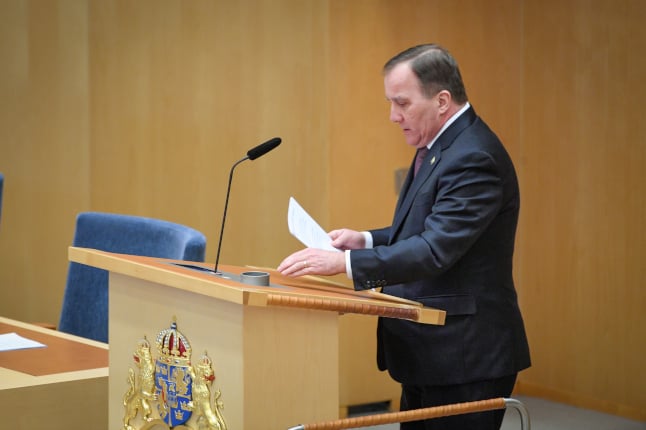
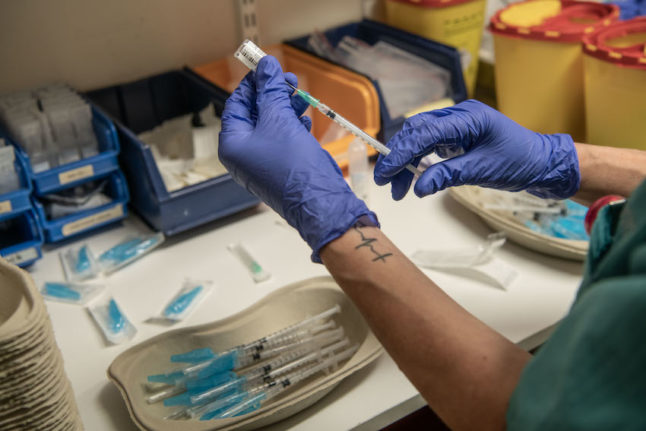
 Please whitelist us to continue reading.
Please whitelist us to continue reading.
Member comments